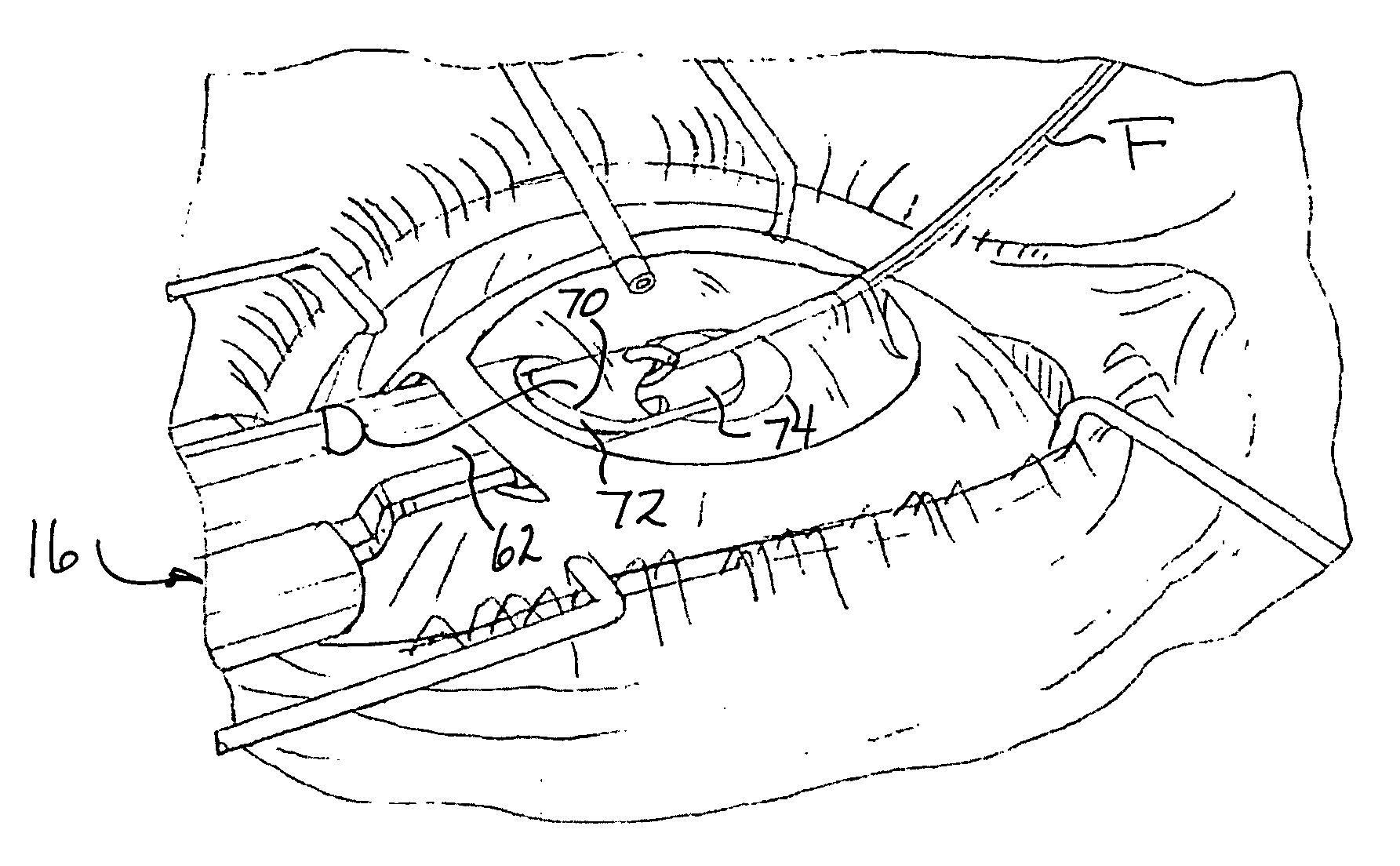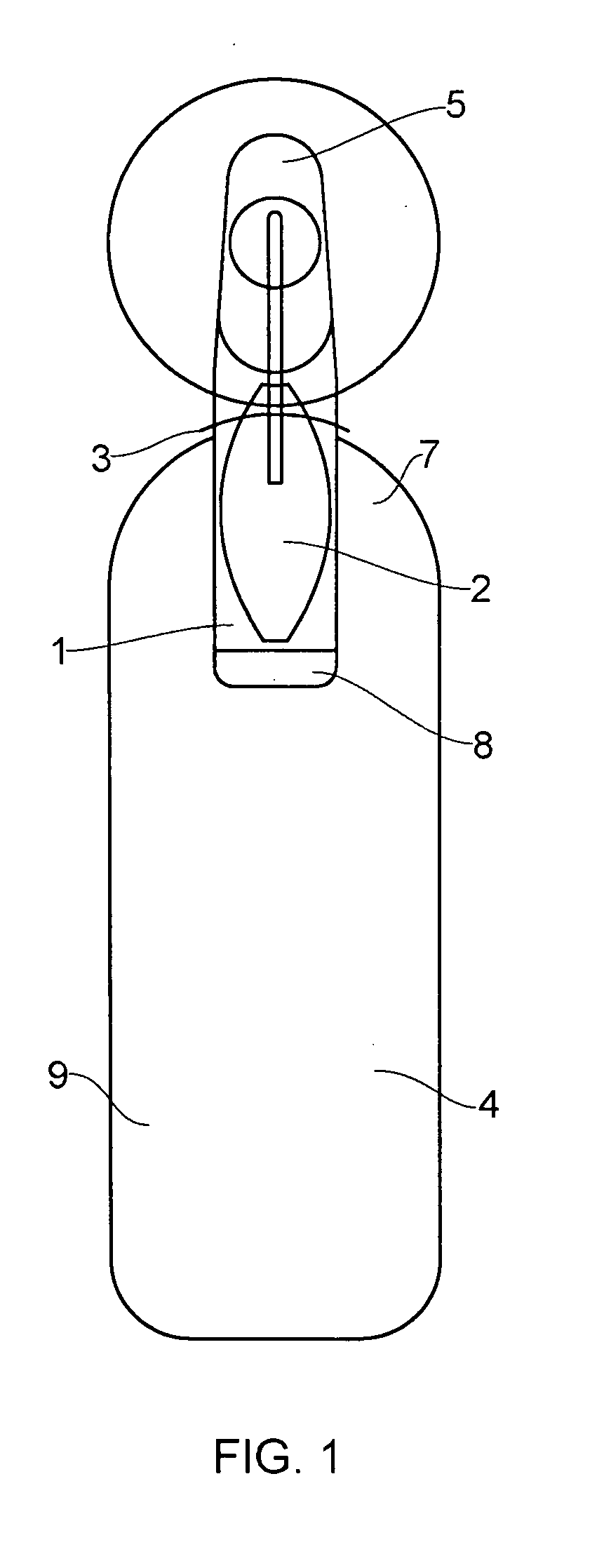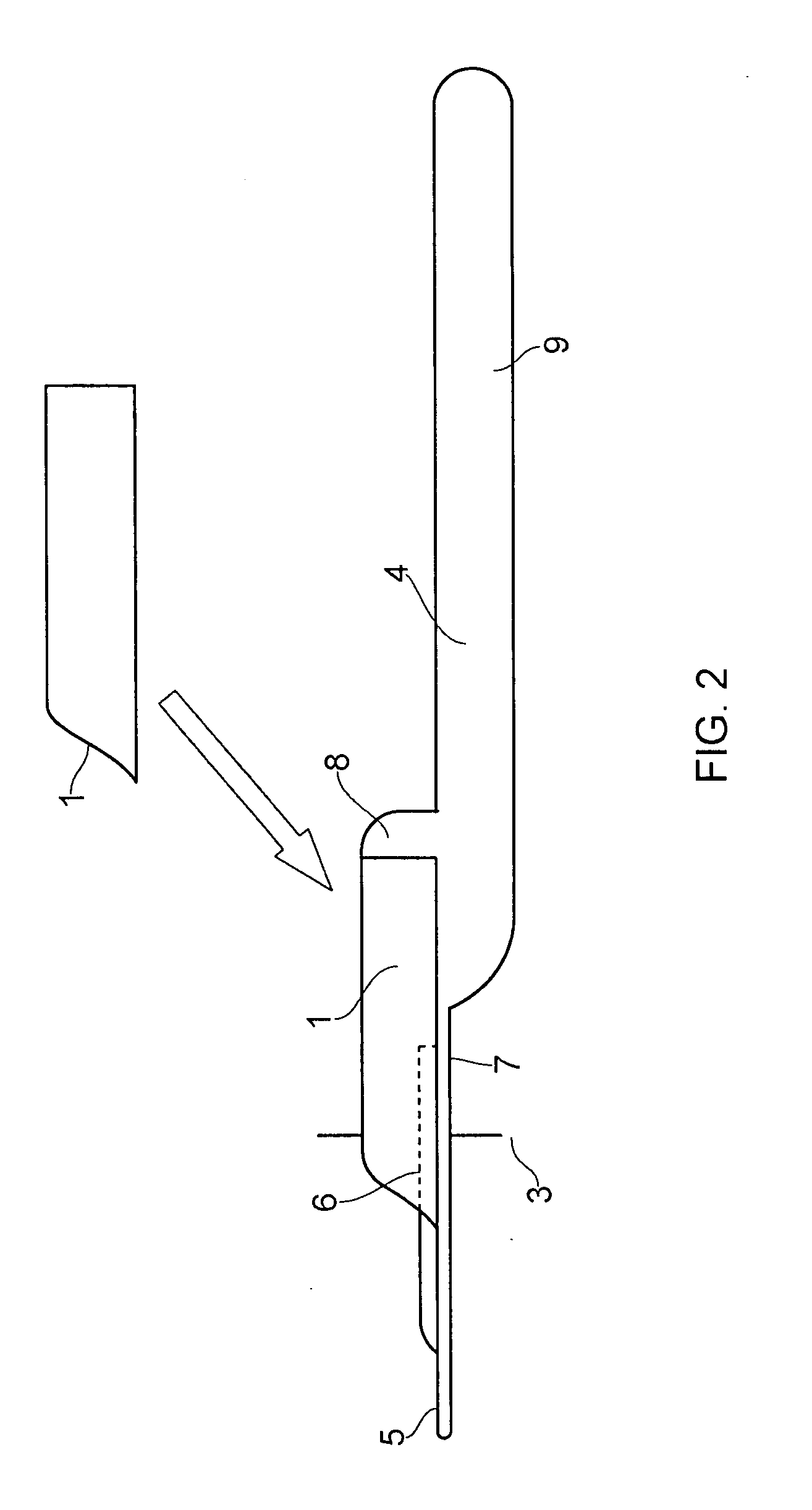System and method for descemet's stripping automated endothelial keratoplasty (DSAEK) surgery
- Summary
- Abstract
- Description
- Claims
- Application Information
AI Technical Summary
Benefits of technology
Problems solved by technology
Method used
Image
Examples
Embodiment Construction
[0081]Turning in detail initially to FIGS. 1-4 and 7-9 of the drawings, the donor chamber 1 of a first embodiment is composed of clear plastic, and consists of a curved chamber, open at both ends. The donor lenticule 2 is dragged into the chamber and coiled up in a specific proprietary configuration, with the stromal surface snugly aligned to the inner surface of the chamber 1. The front end of the chamber 1 is bevelled in a cut-away design to allow ease of insertion through a scleral wound opening 3. The outer chamber diameter is designed to fit exactly through the scleral wound 3 with a semi-elliptical opening. The superior aspect of the anterior edge has a cut-away anterior surface to allow space for a pair of glide forceps (not shown) to enter the chamber 1 and grasp the leading stromal edge of the coiled donor 2. The posterior margins of the chamber 1 are straight-edged and grooved, to allow sliding of a glide platform 4 to close the chamber 1 inferiorly, with a glide member 5 ...
PUM
 Login to View More
Login to View More Abstract
Description
Claims
Application Information
 Login to View More
Login to View More - R&D
- Intellectual Property
- Life Sciences
- Materials
- Tech Scout
- Unparalleled Data Quality
- Higher Quality Content
- 60% Fewer Hallucinations
Browse by: Latest US Patents, China's latest patents, Technical Efficacy Thesaurus, Application Domain, Technology Topic, Popular Technical Reports.
© 2025 PatSnap. All rights reserved.Legal|Privacy policy|Modern Slavery Act Transparency Statement|Sitemap|About US| Contact US: help@patsnap.com



